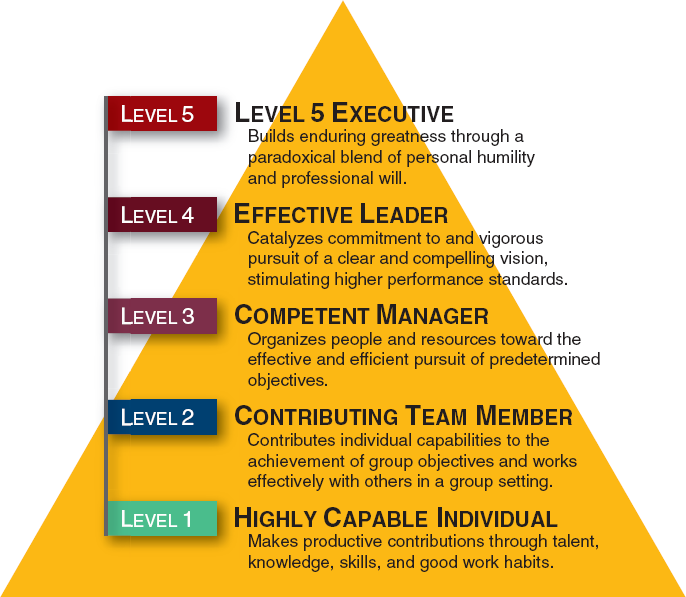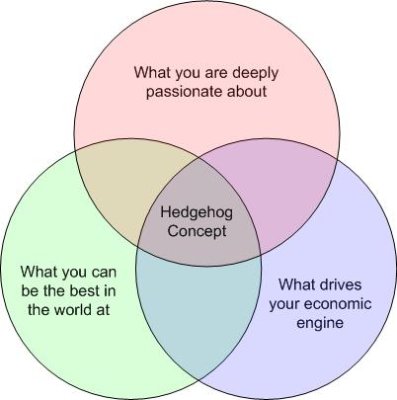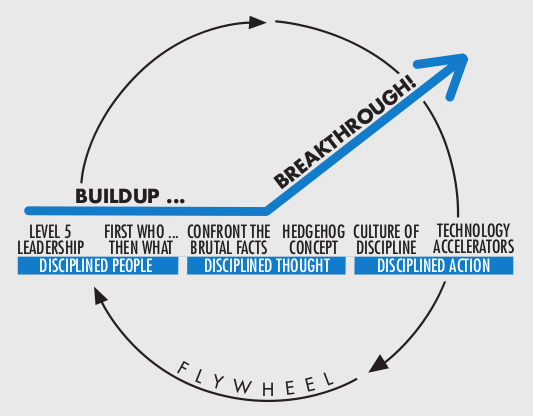 Good to Great: Why Some Companies Make the Leap… and Others Don’t by James C. Collins
Good to Great: Why Some Companies Make the Leap… and Others Don’t by James C. Collins
My rating: 4 of 5 stars
This is a really interesting book for people who are in a senior leadership position, it shows that any company can be great if they identify what they are good at and they focus solely on that. The book also highlights that this is not an easy of quick transformation taking year (or decades) to get the company doing the things which its good at and improving on it.
The 6 stages (then repeat to gain momentum) of:
- Having a Level 5 leader

- These are people who are passionate about the company and not about themselves. Prepared to make the right decisions for the company no matter how hard.
- Set up their successors for even greater success
- More “plow horse” than “show hours”
- Looks at windows to praise others and mirrors to blame themselves – taking full responsibility.
- Attribute success to good luck than to personal greatness
- First who then what
- Getting the right people in the right places and getting rid of the people who are not right
- A genius with a thousand helpers model does not scale or provide longevity
- Three principles:
- If in doubt don’t hire
- When you know you need to make a change act
- Put your best people on your biggest opportunities, not your biggest problems
- Teams who debate productively in search of the right answer and once they find it commit to it, regardless of personal interests.
- Compensation is only to keep the right people and not to motivate meaning that great companies did not pay more than good ones.
- “People are your most important asset” is wrong, “The right people are your most important asset” is
- The “right” person is more about character traits and innate capabilities than with specific knowledge, background, or skills.
- Confront the brutal facts
- Confront your reality, honestly and with diligence to uncover the truth.
- People need to have a tremendous opportunity to be heard and, ultimately, for the truth to be heard
- Lead with questions, not answers
- Engage in dialogue and debate, not coercion
- Conduct autopsies, without blame
- Build red flag mechanisms that turn information into information that cannot be ignored
- “Retain absolute faith that you can and will prevail in the end, regardless of the difficulties AND at the same time confront the most brutal facts of your current reality, whatever they might be”
- Charisma can be as much a liability as an asset for a leader
- Confronting the facts and act on the implications
- Ignoring the brutal facts of reality is demotivating
- Hedgehog concept

- The hedgehog is an understanding strategy of what the company can be the best in the world at, not necessarily what it wants to be the best at.
- If you can not be best in the world at your core bussiness then that can not be your hedgehog concept.
- The “best in the world” understanding is a much more severe standard than a core competence. You might have a competence but not necessarily have the capacity to be truly the best in the world at that competence. Conversely, there may be activities at which you could become the best in the world, but at which you have no current competence.
- Identify your economic driver e.g. profit per x which has the single greatest impact
- Good to great companies base their strategies on understanding, not bravado
- Getting the hedgehog concept is iterative and not just a single meeting to decide it – on average taking 4 years
- Culture of discipline
- Keeping to the three circles is key
- Bureaucratic cultures arise to compensate for incompetence and lack of discipline
- Within the circles it gives people freedom. Disciplined people engaged in disciplined thought who then take disciplined action
- These companies can look dull from the outside but are incredibly diligent and with stunning intensity always trying to make things better to the nth degree
- Culture of discipline is not a tyrant who disciplines, the latter being extremely dysfunctional
- The more a company stays in the circles the more opportunity it will have to grow
- A “once in a lifetime” opportunity is only worth it if it is within the three circles
- Budgeting against the hedgehog concept identifies which activities should be fully funded and which should not be funded at all
- “Stop doing” lists are more important than “to do” lists
- Technology accelerators
- Good to great companies avoid technology fads, they are only interested in ones which can build on the hedgehog model
- Technology is used as an accelerator, not as a creator
- Mediocre companies react and lurch about, motivated by fear of being left behind
- “Crawl, walk, run” can be very effective during technical change
After following the steps it is key to keep doing them, small increments add to big benefits. The companies which keep changing direction effectively keep growth down where as if they kept the fly wheel going they would have achieved far superior results.
